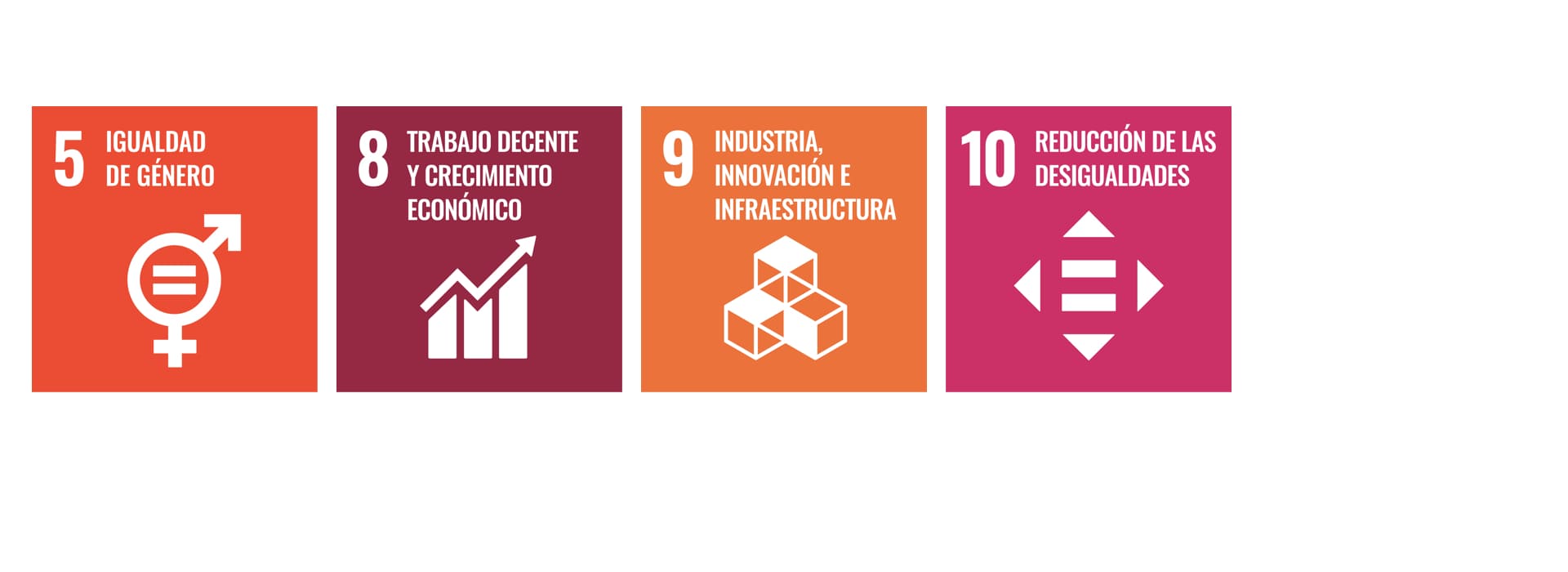Artificial Intelligence can be an ally in the fight for gender equality, but it needs to be trained. Through machine learning, algorithms learn whatever we want them to, but something that seems completely harmless can result in mass discrimination if the examples with which it has been trained present some kind of bias. Ana Freire, Director of the Operations, Technology and Science Dept., show some examples.

Ana Freire
Director of the Operations, Technology & Science Dept.
Expert in technology and artificial intelligence
__
The first operating theatres with dedicated space in hospitals were created at the end of the 18th century. From their beginnings, most doctors were men, in fact, the Spanish National Institute of Statistics does not have data on the presence of women in medicine until 1954, where it records 334 women versus 31,284 men. This large gender gap took decades to narrow, with 2017 being the first year to record more female doctors than male doctors in Spain. And I say "female doctors", because fortunately the Dictionary of the Spanish Language establishes "médica" (female doctor) as the only correct way of naming a woman who practises medicine, the masculine form being incorrect.
According to a 2021 study, 87.3% of female orthopaedic surgeons reported physical symptoms from the use of equipment designed to fit men. Sixty-three per cent experienced pain and more than 70 per cent experienced fatigue
Although women outnumber men in medicine today, this is not the case in the field of surgical medicine, where there is still a marked imbalance. The fact that it was always men who performed surgery meant that surgical equipment was designed with men in mind. As a result, female surgeons are more likely to develop discomfort or symptoms attributable to ill-fitting instrumentation.
A study published in 2021 concluded that 87.3% of the female orthopaedic surgeons interviewed reported physical symptoms from using equipment designed from male measurements. Pain was reported by 63% and fatigue by more than 70%. Moreover, the frequency of these complaints was weekly in most cases and their duration exceeded two years. The interviewees particularly complained about the difficulty of using gouges and reduction clamps. If this technology were developed with a gender perspective, the above percentages would be considerably reduced.
AI with a gender perspectiveSometimes the consequences of the lack of a gender perspective are not so obvious. This happens when the technology is not hardware, but software, but the effects can be equally devastating. We are talking about Artificial Intelligence (AI). A machine is intelligent when it replicates in some way intelligent human behaviour. This ranges from computers that know how to play chess to automated systems that decide, for example, which candidate to grant a social benefit to.
And how can machines develop this (albeit limited) intelligence? One of the most widely used techniques is machine learning. It consists of showing the machine examples of what we want it to learn. For example, if we want to build a system that automatically selects the five best CVs from a set of 100 job candidates, we must show our algorithm examples of CVs to select and examples of CVs to discard. Once trained, the system can start to perform this ranking automatically.
Amazon created an algorithm in 2014 to select the top 5 CVs and speed up the selection process, but it didn't include women. Why? Because the majority of CVs received historically belonged to men and the algorithm "learned" that this was the condition for the best CVs
Something that may seem completely harmless can result in mass discrimination if the examples on which the system has been trained are biased in some way. This is what happened, for example, to Amazon. In 2014, the company created an intelligent algorithm precisely to solve the task of selecting the 5 best CVs and thus speed up recruitment processes. This algorithm had been trained using a history of CVs received over the previous 10 years. What was the surprise? That the algorithm hardly selected any women. Why was that? Because most of the CVs received historically belonged to men, and the algorithm "learned" that this was a condition for selection. No one had programmed the algorithm to leave out women's CVs, but it was perpetuating a historically existing gender bias in that job.
Diversity in teams, a key factorJust as it is possible to design surgical technology adapted to women, it is also possible to design artificial intelligence algorithms that mitigate existing biases in the data on which they are trained. But we need to see the necessity. A key factor for this is diversity in technology development teams: if these teams are not diverse (not only in terms of gender, but also in terms of ethnicity, culture, etc.) it will be more difficult to detect cases of bias because everyone will see that it works for them. As a result, when the resulting technology is implemented, it cannot be used equally by all its users.
The use of technology is becoming more and more widespread. If we want our society to progress, that technology cannot turn its back on more than 50% of the population
Fortunately, there are fewer and fewer people asking the question that gives this article its title and there are more and more initiatives that are fighting to increase the presence of women in the technology sector. We know that the use of technology is becoming more and more widespread and that, if we want our society to progress, technology cannot turn its back on more than 50% of the population.

